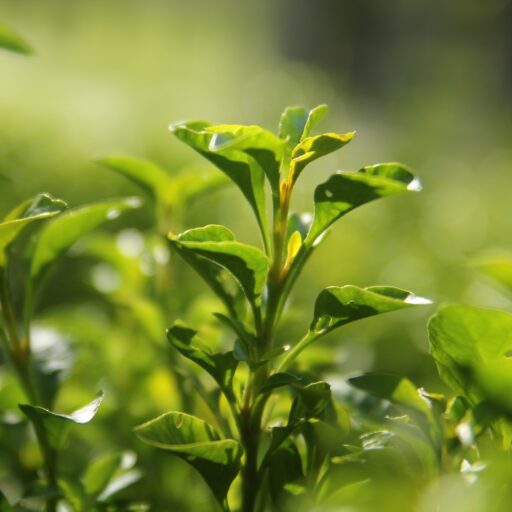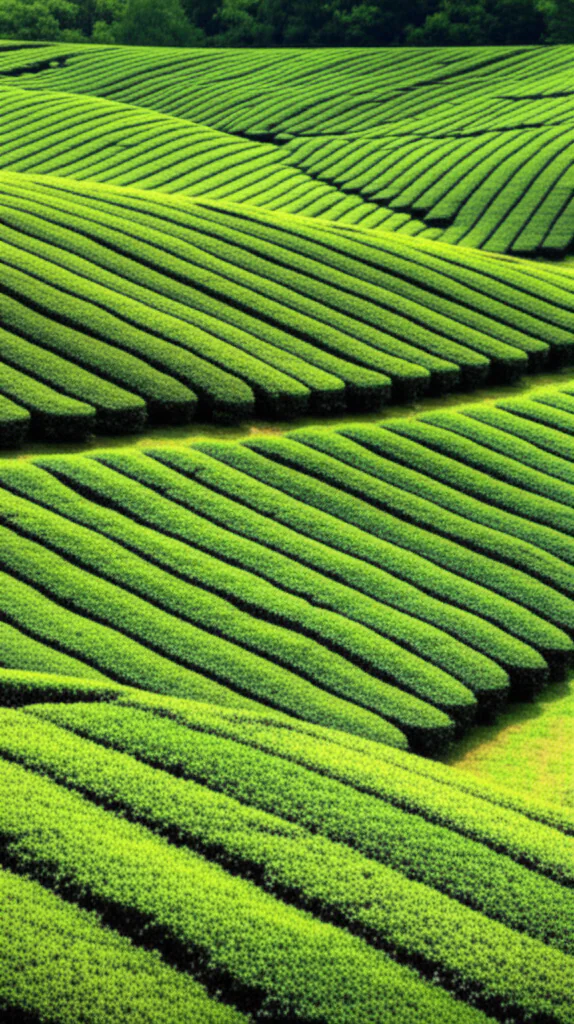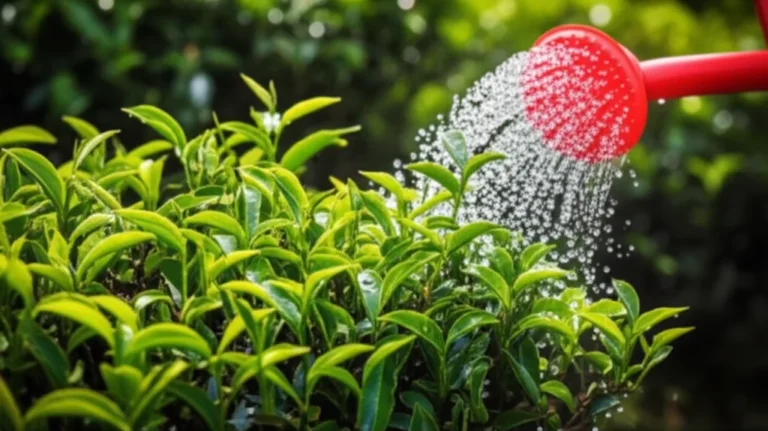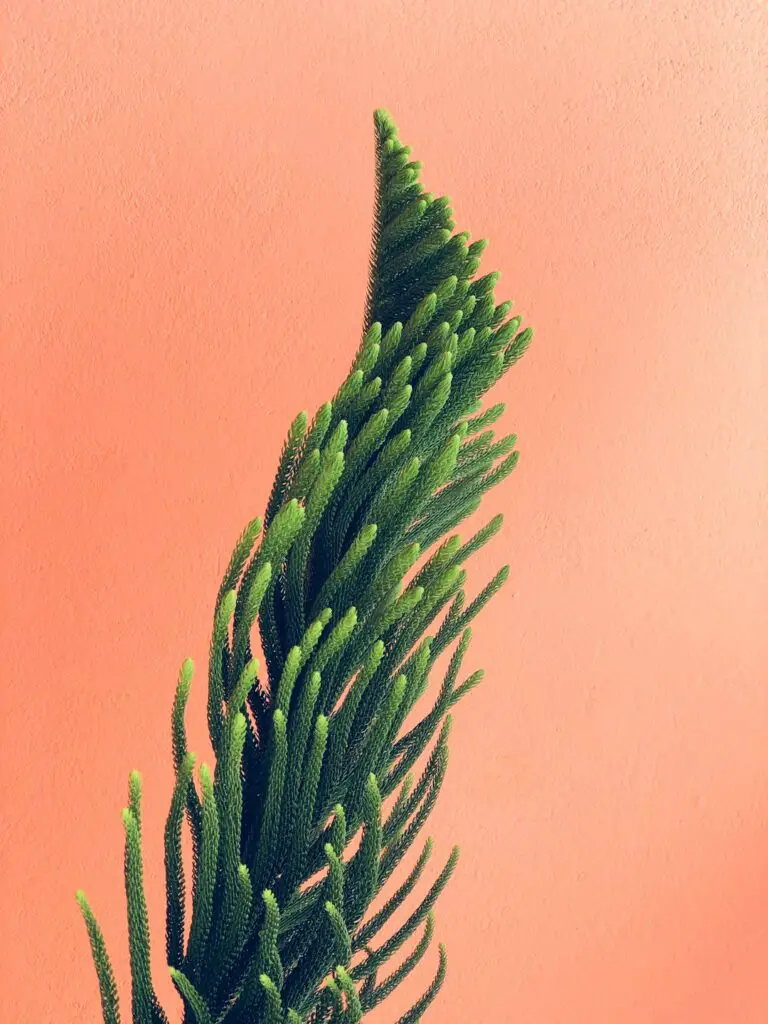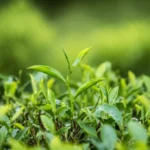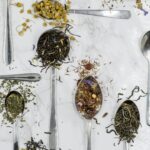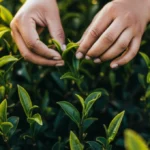Support our educational content for free when you purchase through links on our site. Learn more
How to Care for a Tea Plant: 13 Expert Tips for Thriving Growth 🍃 (2025)
Ever wondered how to grow your own tea plant and enjoy fresh, home-harvested leaves for your perfect cup? At Growing Teas™, we’ve spent years cultivating Camellia sinensis—the very shrub behind all true teas—and we’re excited to share the ultimate guide to caring for your tea plant. From the secret to perfect acidic soil to pruning techniques that boost leaf production, this article covers 13 essential tips that will transform your tea-growing experience.
Did you know that tea plants can live for decades and produce leaves year-round with the right care? But beware—neglecting soil pH or watering can quickly turn your green dream into a yellow-leaf nightmare. Stick with us to learn how to avoid common pitfalls, propagate new plants, and even encourage those delicate white blossoms that signal a healthy tea bush. Ready to become a tea-growing pro? Let’s dive in!
Key Takeaways
- Acidic, well-draining soil (pH 4.0–6.0) is critical for healthy tea plants.
- Consistent moisture without waterlogging keeps roots happy and productive.
- Pruning encourages bushy growth and maximizes leaf harvests.
- Choose the right tea plant variety based on your climate and growing space.
- Organic pest control, like neem oil, protects your plant safely.
- Propagate easily from cuttings to expand your tea garden.
For those ready to start growing, check out our recommended sources for Camellia sinensis plants and acidic fertilizers in the Recommended Links section below. Your perfect cup of homegrown tea awaits!
Table of Contents
- ⚡️ Quick Tips and Facts: Your Instant Tea Plant Wisdom
- 🌿 The Ancient Roots of Your Brew: A Brief History of Camellia Sinensis Cultivation
- 1. Unveiling the Tea Plant: What Exactly is Camellia Sinensis?
- 2. The Ideal Home: Crafting the Perfect Environment for Your Tea Plant
- 3. Soil & Sustenance: The Foundation for Flourishing Tea Leaves
- 4. The Art of Hydration: Watering Your Tea Plant to Perfection
- 5. The Shear Delight: Mastering Pruning for a Bountiful Tea Harvest
- 6. Potting & Repotting Camellia Sinensis: Giving Your Tea Plant Room to Grow
- 7. Growing Tea Indoors vs. Outdoors: A Tale of Two Gardens
- 8. Overwintering Your Tea Plant: Protecting Your Precious Crop from the Cold
- 9. Propagating Camellia Sinensis: Expanding Your Tea Empire
- 10. Common Pests & Plant Diseases: Battling the Baddies in Your Tea Garden
- 11. The Bloom & The Brew: How to Get Your Tea Plant to Flower (and Why It Matters)
- 12. Harvesting Your Homegrown Tea: From Leaf to Cup
- 13. Troubleshooting Your Tea Plant: Solving Common Mysteries
- Conclusion: Your Journey to a Thriving Tea Garden
- Recommended Links: Dive Deeper into the World of Tea
- FAQ: Your Most Pressing Tea Plant Questions Answered
- Reference Links: Our Sources for Tea-rrific Knowledge
Hello fellow tea lovers! Here at Growing Teas™, we’ve spent years with our hands in the soil, nurturing the very plants that end up in your morning cup. We believe there’s a special magic in growing your own, and we’re here to spill the tea (pun absolutely intended!) on how you can cultivate a thriving Camellia sinensis plant right at home. Forget just drinking tea; let’s get you living it. We’ve compiled all our best secrets, learned from muddy boots and countless cups of homegrown brew, to guide you on this incredible journey. Ready to transform your thumb from brown to green? Let’s dig in!
⚡️ Quick Tips and Facts: Your Instant Tea Plant Wisdom
Pressed for time? We get it. Here’s the essential brew of what you need to know about caring for your tea plant. Think of this as the perfect steep—quick, potent, and gets you exactly what you need!
| Aspect | Growing Teas™ Expert Advice |
|---|---|
| Botanical Name | Camellia sinensis |
| Common Names | Tea Plant, Tea Shrub, Tea Camellia |
| Plant Type | Broadleaf evergreen shrub |
| Mature Size | 6-15 ft. tall, 4-8 ft. wide (can be kept smaller with pruning) |
| Hardiness Zones | Best for USDA Zones 7-9. Some cultivars are hardy to zone 6! |
| Sun Exposure | Full sun to partial shade. Loves morning sun with afternoon shade in hotter climates. |
| Soil Type | Acidic is non-negotiable! Moist, rich in organic matter, and well-draining. |
| Soil pH | 4.0 to 6.0 is the sweet spot. |
| Watering | Keep soil consistently moist, but never soggy. Rainwater is a fantastic treat! |
| Fertilizing | Feed with an acid-loving plant fertilizer in spring and early summer. |
| Harvesting | Pluck the youngest “two leaves and a bud” for the best quality tea. |
| Toxicity | Moderately toxic to pets if ingested, so keep an eye on your furry friends. |
Here at the farm, we always tell newcomers the single most important thing is acidic soil. We once had a whole row of young plants looking yellow and sad. We tried everything—more water, less water, shade cloths. Turns out, the soil pH had crept up to neutral. A quick application of a soil acidifier, and they bounced back greener than ever! It’s the one secret that separates a struggling plant from a tea-producing champion. If you’re just starting out, check out our guide on the best tea plants to grow at home.
🌿 The Ancient Roots of Your Brew: A Brief History of Camellia Sinensis Cultivation
Every time you hold a teacup, you’re holding thousands of years of history. The Camellia sinensis plant, native to East and Southeast Asia, is the mother of all true teas—white, green, oolong, and black all come from this one remarkable shrub. The differences simply come down to how the leaves are processed after harvesting.
For centuries, this plant was a closely guarded secret in China, revered not just as a beverage but as a medicinal herb. Buddhist monks used it to stay alert during long meditations, and it eventually became a cornerstone of cultures across the globe. Learning about the History of Tea adds a whole new layer of appreciation to your gardening journey. It’s not just a plant; it’s a living artifact.
1. Unveiling the Tea Plant: What Exactly is Camellia Sinensis?
So, what is this magical plant? Camellia sinensis is a species of evergreen shrub or small tree whose leaves and leaf buds are used to produce tea. It’s a member of the same family as the decorative Camellias you might see in ornamental gardens, but this one comes with a delicious bonus! The plant itself is beautiful, with glossy green leaves and delicate, fragrant white blossoms that appear in the fall.
Meet the Family: Varieties and Cultivars of the Tea Bush
While it’s all one species, there are two main varieties you’ll encounter:
- Camellia sinensis var. sinensis: A smaller-leafed variety native to China that is more tolerant of colder weather. It’s typically used to make green and white teas.
- Camellia sinensis var. assamica: A larger-leafed variety native to the Assam region of India. It thrives in warmer, wetter climates and is the backbone of most black teas.
From these two varieties, thousands of cultivars have been developed over the centuries, each with unique flavor profiles and growing characteristics. It’s a whole world to explore!
Choosing Your Champion: Which Tea Plant is Right for You?
For most home gardeners in North America, the sinensis variety is the way to go, especially the “Cold Hardy” cultivars that can handle zone 6b winters. If you live in a colder climate, don’t despair! Tea plants do wonderfully in containers. You can keep them on a sunny patio during the summer and bring them indoors to a bright spot for the winter.
Ready to start your tea garden? Finding a healthy plant is the first step.
👉 Shop Camellia Sinensis Plants on:
- Logee’s: Logee’s Plants
- FastGrowingTrees.com: FastGrowingTrees.com
- Etsy: Etsy
2. The Ideal Home: Crafting the Perfect Environment for Your Tea Plant
Like a discerning houseguest, your tea plant has preferences. Get the environment right, and you’ll be rewarded with lush growth. Get it wrong, and… well, let’s just focus on getting it right.
Sunlight Secrets: How Much Light Does Your Tea Bush Crave?
Here’s where some advice can get confusing. Some sources say “indirect light,” while others recommend “full sun.” So what’s the real story? It depends entirely on your climate.
- ✅ Colder Zones (6-7): Give your plant at least 6 hours of direct sunlight. It needs that energy to thrive.
- ✅ Hotter Zones (8-9): Morning sun is perfect, but provide shade from the harsh afternoon sun. Too much intense heat can scorch the leaves. Think of it like a beachgoer—happy to sunbathe in the morning, but needs an umbrella by 3 PM.
- ❌ Full Shade: Avoid deep shade. As Gardening Know How puts it, “Tea plants placed in the sun are more robust.”
Temperature Tango: Keeping Your Camellia Sinensis Cozy
Your tea plant is a bit of a Goldilocks—it doesn’t like it too hot or too cold.
- Happy Place: It thrives in temperatures between 70°F and 85°F during the growing season.
- Winter Nap: For dormancy, it prefers a cool 45°F to 61°F.
- Cold Snap: It can tolerate brief dips down to 20°F, but extended hard frosts can cause damage.
Humidity Haven: Misting Your Way to a Happy Tea Plant
Coming from tropical and subtropical regions, tea plants love humidity. If you’re growing indoors, especially in a dry, centrally-heated home, you’ll need to boost the moisture in the air.
- Misting: A daily misting is a great way to say “I love you” to your plant.
- Pebble Tray: Place the pot on a tray filled with pebbles and water. As the water evaporates, it creates a humid microclimate.
- Humidifier: Grouping it with other plants or using a small room humidifier works wonders.
A word of caution from JOMO Studio: be mindful that “excess humidity combined with heavy soils can cause fungal diseases.” Good air circulation is key!
3. Soil & Sustenance: The Foundation for Flourishing Tea Leaves
If you remember one thing, make it this: tea plants demand acidic soil. This is the number one rule of tea cultivation. Get this right, and you’re halfway to a happy plant.
The Acid Test: Achieving the Perfect pH for Tea Plant Soil
Your goal is a soil pH between 4.0 and 6.0. Most garden soils are more neutral (around 6.5-7.0), so you’ll likely need to amend it.
- Get a Soil Test: Don’t guess! A simple soil test kit will tell you your starting pH.
- Amend Your Soil: Use soil acidifiers or work in organic matter like pine bark fines, peat moss, or compost.
- Mulch Wisely: An acidic mulch like pine straw is a great way to help maintain the proper pH over time.
As the featured video points out, planting near evergreen trees can naturally help acidify the soil, creating “a really perfect union.”
Drainage Dreams: Why Good Soil Structure is Non-Negotiable
While tea plants like consistent moisture, they absolutely hate being waterlogged. Good drainage is crucial to prevent root rot. We love the phrase from Gardening Know How: “tea plants don’t appreciate wet feet.” Ensure your soil is amended with perlite or sand to keep it light and airy, and always use pots with plenty of drainage holes.
Feeding Your Future Brew: Essential Nutrients and Fertilization for Tea Plants
A hungry plant won’t give you many leaves for harvesting. Fertilizing during the growing season (spring and summer) is key.
Organic vs. Synthetic: What’s Best for Your Tea Garden?
You have options, and both can work well.
- Organic: We’re partial to the organic route. Things like compost, fish emulsion, or a balanced fertilizer formulated for acid-loving plants (think azaleas or rhododendrons) work beautifully. Brands like Dr. Earth Acid Lovers or Espoma Holly-tone are excellent choices.
- Synthetic: A balanced 10-10-10 formula can be used if you’re focused on harvesting lots of leaves. If you want to encourage more flowers, look for a fertilizer with a higher middle number (phosphorus), like a 5-15-5.
When and How to Fertilize Your Camellia Sinensis
- Frequency: For outdoor plants, once a year in the spring may be enough. For container-grown plants, which have limited access to nutrients, feeding every other month during the growing season is a good rule of thumb.
- Application: Always water the plant before fertilizing to avoid burning the roots. If you spill any fertilizer on the leaves, rinse it off immediately.
👉 Shop Acidic Fertilizers on:
- Walmart: Walmart
- Amazon: Amazon
- Grow Organic: GrowOrganic.com
4. The Art of Hydration: Watering Your Tea Plant to Perfection
Watering seems simple, but it’s an art. The goal is to keep the soil consistently moist but not waterlogged.
Thirsty or Drowning? The Goldilocks Zone of Tea Plant Watering
- Check the Soil: The best way to know when to water is to feel the soil. If the top inch or two is dry, it’s time for a drink.
- Water Deeply: When you do water, do it thoroughly. Let the water run all the way through the pot and out the drainage holes. This encourages deep, strong root growth.
- Don’t Let it Dry Out Completely: This is especially crucial for container plants. We agree with JOMO Studio’s pro tip: “never allow the soil to become completely dry.”
- Young vs. Mature: Young plants will need more frequent watering (2-3 times a week in summer) than established, drought-resistant mature plants.
Water Quality Matters: What’s in Your Tap?
Tea plants can be sensitive to the chlorine and minerals in some tap water. If you really want to pamper your plant, use rainwater or distilled water. They’ll thank you for it with healthier, happier leaves.
5. The Shear Delight: Mastering Pruning for a Bountiful Tea Harvest
Don’t be afraid of pruning! It’s one of the best things you can do for your tea plant. It keeps the plant healthy, encourages a bushy shape, and, most importantly, stimulates the growth of new leaves—which is exactly what you want to harvest!
Why Prune? Shaping Your Tea Bush for Health and Yield
Pruning serves two main purposes:
- Shaping and Size Control: Especially for container plants, pruning keeps them at a manageable size. You can shape it into a nice, dense shrub.
- Maximizing Harvest: Pruning the tips encourages the plant to send out more leafy shoots. This is the secret to a continuous supply of fresh tea leaves.
When to Snip: Timing Your Pruning for Optimal Growth
The best time for a hard prune (for shaping) is in late winter or early spring, right after the plant has finished blooming. For light pruning (for harvesting), you can do this periodically throughout the growing season.
The How-To: Techniques for Pruning Camellia Sinensis
- The Basics: Always use clean, sharp pruners. Make your cuts just above a leaf node.
- For Health: Remove any dead, damaged, or diseased branches first.
- For Shape: The Spruce notes you can perform a “hard pruning of up to half the foliage” to shape young shrubs.
- For Harvest: The featured video advises a lighter touch, focusing on just “pruning the tips periodically to encourage leafy growth.” This is the method we use for our harvesting plants at the farm.
6. Potting & Repotting Camellia Sinensis: Giving Your Tea Plant Room to Grow
If you’re growing in a container, your plant will eventually need a bigger home. Repotting gives the roots more space and replenishes the soil.
Choosing the Right Pot: Size, Material, and Drainage
- Size: Choose a container that is about two times wider and deeper than the current rootball.
- Material: Plastic and glazed ceramic pots are great because they retain moisture better than unglazed terracotta. If you do use terracotta, you may need to water more often.
- Drainage: This is non-negotiable. Ensure your pot has multiple drainage holes.
The Repotting Ritual: When and How to Upgrade Your Tea Plant’s Home
- When: Repot every three to four years, or when you see roots circling the container or poking out of the drainage holes.
- How-To (Step-by-Step):
- Choose your new, larger pot.
- Fill the bottom third with a quality, acidic potting mix (you can mix in some aged compost).
- Gently remove the plant from its old pot. Tease the roots a bit if they are tightly bound.
- Set the plant on top of the new soil, ensuring the crown (where the stem meets the roots) is just above the soil level.
- Fill in around the roots with more potting mix, gently firming it down.
- Water thoroughly until water runs from the drainage holes.
7. Growing Tea Indoors vs. Outdoors: A Tale of Two Gardens
Whether you have a sprawling backyard or a sunny apartment balcony, you can grow tea. The approach is just a little different.
Container Growing Tea Plants: Tips for Urban Tea Farmers
Growing in pots is perfect for those outside the ideal hardiness zones or with limited space. The key is being attentive. Container plants dry out faster, use up nutrients more quickly, and are more sensitive to temperature swings. You’ll need to be diligent with your watering and fertilizing schedule.
Establishing a Tea Garden: From Seedling to Shrub
If you’re lucky enough to live in zones 7-9, you can plant directly in the ground. Prepare your acidic, well-draining soil bed, and give your plants space to grow. As the featured video mentions, Camellia sinensis has fantastic permaculture value and can be used to create beautiful and productive hedges or windbreaks.
8. Overwintering Your Tea Plant: Protecting Your Precious Crop from the Cold
Winter is coming! Preparing your tea plant for the colder months is crucial for its survival and long-term health.
Cold Hardiness: Understanding Your Tea Plant’s Limits
Remember, most tea plants are comfortable in USDA zones 7-9. If you’re in zone 6, you’ll need a cold-hardy cultivar and extra protection. If you’re in zone 5 or below, container growing and bringing the plant indoors is your only option. You can check your specific zone on the USDA Plant Hardiness Zone Map.
Winterizing Outdoor Tea Plants
For in-ground plants in marginal zones (6b-7a), a little winter TLC goes a long way.
- Mulch Heavily: Apply a thick layer of acidic mulch (like pine straw or shredded leaves) around the base of the plant to insulate the roots.
- Wrap it Up: For extra protection during deep freezes, you can create a cage with wire, wrap it in burlap, and fill it with straw or leaves.
Bringing Indoor Tea Plants Through Winter
For your potted tea plants, winter means a trip inside.
- Find a Cool, Bright Spot: An unheated greenhouse, an enclosed porch, or a bright window in a cool room is ideal. They need a cool period (around 50°F) to rest.
- Cut Back on Water: The plant’s growth will slow dramatically. Reduce watering, allowing the soil to dry out a bit more between drinks.
- Hold the Fertilizer: Stop fertilizing completely until you see new growth in the spring.
9. Propagating Camellia Sinensis: Expanding Your Tea Empire
One of the most rewarding things about gardening is creating new plants from your existing ones. It’s surprisingly easy to propagate Camellia sinensis and share your tea-growing passion with friends!
From Cuttings to New Life: The Art of Tea Plant Propagation
The easiest and most reliable method is taking softwood cuttings between March and September. Here’s our step-by-step guide, adapted from The Spruce’s excellent instructions:
- Take Cuttings: Snip a 6-8 inch piece of new, softwood stem. Make a 45° cut just above a leaf node.
- Prepare Leaves: Carefully cut single leaves from the stem, keeping a small piece of the stem attached to each leaf.
- Potting Medium: Fill a small pot or seedling tray with a light, well-draining potting mix.
- Hormone Dip (Optional): Dip the stem end of your cutting in water, then in a rooting hormone. This isn’t strictly necessary but can increase your success rate.
- Plant the Cuttings: Insert the stem into the potting medium, ensuring the leaf itself doesn’t touch the soil.
- Create a Humid Home: Water the cuttings gently and cover the tray with a plastic dome or bag to create a mini-greenhouse.
- Wait for Roots: Place the tray in a warm (80-85°F) spot with bright, indirect light. Roots should develop in about four weeks. When you see new growth, you’ve done it!
The presenter in the featured video also notes that layering is another great propagation method.
Growing from Seed: A Patient Gardener’s Reward
You can also grow tea plants from seed, but it requires patience. It’s a slower process, and as the video points out, the resulting plants may have genetic variations from the parent. Cuttings will give you an exact clone.
10. Common Pests & Plant Diseases: Battling the Baddies in Your Tea Garden
Even the healthiest plants can sometimes face invaders. The key is to spot them early and act fast. Since you’ll be consuming the leaves, we strongly recommend sticking to organic pest control methods.
Identifying the Intruders: A Rogue’s Gallery of Tea Plant Pests
- Indoor Pests: Keep an eye out for scale, aphids, spider mites, and leafhoppers. They love the dry, stable conditions of an indoor environment.
- Outdoor Pests: Caterpillars and grasshoppers might munch on your leaves.
Fungal Foes & Other Ailments: Diagnosing Tea Plant Diseases
Poor air circulation and overly wet conditions can lead to fungal issues like leaf spot, root rot, and petal blight.
Organic Pest Control & Disease Prevention: Your Eco-Friendly Arsenal
Our go-to weapon at the farm is neem oil. It’s a fantastic organic, multi-purpose tool that acts as an insecticide and fungicide. It’s effective against most common pests and fungal diseases.
- How to Use: Mix neem oil with water and a drop of mild soap (to help it emulsify) and spray all surfaces of the plant at the first sign of trouble.
- Prevention is Key: Good plant hygiene, proper watering, and ensuring good air circulation are the best ways to prevent problems before they start. Our section on Green Tea Cultivation has more tips.
👉 Shop Organic Neem Oil on:
- Amazon: Amazon
- Walmart: Walmart
- Grow Organic: GrowOrganic.com
11. The Bloom & The Brew: How to Get Your Tea Plant to Flower (and Why It Matters)
Yes, your tea plant will flower! In the autumn, it produces small, delicate white flowers with bright yellow stamens. They have a sweet, subtle fragrance and are a lovely sight.
Flowering for Fun vs. Flowering for Flavor: The Tea Grower’s Dilemma
Here’s the thing: a plant has a finite amount of energy. If it’s putting energy into making flowers, it’s putting less energy into making new leaves. For commercial tea growers, flowers are often pruned off to maximize leaf production. For the home gardener, you get to choose! We love letting our plants flower. As the featured video highlights, the blooms are a valuable late-season nectar source for pollinators like bees and even hummingbirds.
Encouraging Blooms: Tips for a Floral Display
- Cooler Temps: Flower buds start to form when temperatures drop to around 60°F in the fall.
- Phosphorus Boost: Fertilizing with a formula higher in phosphorus (the middle number) during the growing season can encourage more blooms.
- Hold the Pruners: Avoid hard pruning in late summer or fall, as you might snip off the developing flower buds.
12. Harvesting Your Homegrown Tea: From Leaf to Cup
This is the moment you’ve been waiting for! The day you get to harvest leaves from your very own plant and brew your first cup. It’s pure magic.
When to Pluck: The “Two Leaves and a Bud” Secret
For the highest quality tea, you want to harvest the newest growth. Look for the tender shoots at the tips of the branches. The ideal pluck is the top two leaves and the unopened leaf bud between them. This is known as the “imperial pluck” and contains the most flavor and beneficial compounds.
Processing Your Tea: A Glimpse into the Magic
How you process the leaves after plucking determines what kind of tea you’ll make. It’s a fascinating process of withering, rolling, oxidizing, and drying.
- Green Tea: The leaves are quickly heated (steamed or pan-fired) to prevent oxidation, preserving their green color and fresh flavor.
- Black Tea: The leaves are rolled to break down the cell walls and then allowed to fully oxidize, which turns them dark and develops deep, malty flavors.
- Oolong & White Tea: These fall somewhere in between, with varying levels of oxidation.
Diving into DIY Tea Blending is the next exciting step in your journey.
13. Troubleshooting Your Tea Plant: Solving Common Mysteries
Is your plant looking a little under the weather? Don’t panic. Plants communicate their needs, you just have to learn their language.
Yellow Leaves? Brown Tips? Decoding Your Tea Plant’s Distress Signals
- Yellow Leaves (Chlorosis): This is the most common issue and almost always points to a soil pH that is too high (not acidic enough). The plant can’t absorb iron and other nutrients in alkaline soil. Test your soil and amend with an acidifier. It can also be a sign of overwatering.
- Brown, Crispy Leaf Edges: This often indicates underwatering or low humidity. Check your watering routine and consider misting your plant.
- Brown or Black Spots: This could be a sign of a fungal leaf spot disease. Remove the affected leaves and treat with neem oil. Ensure good air circulation around the plant.
Stunted Growth & Lack of Vigor: What’s Holding Your Tea Back?
If your plant just isn’t growing, consider these possibilities:
- Needs Repotting: It might be root-bound and out of space.
- Needs Food: It could be hungry. When was the last time you fertilized?
- Not Enough Light: Is it getting enough sun for its needs?
Growing your own tea is an incredibly rewarding experience that connects you to the long history and incredible health benefits of this amazing plant. We hope these tips from our fields to your home help you cultivate a happy, healthy, and productive Camellia sinensis. Happy growing
Conclusion: Your Journey to a Thriving Tea Garden
Congratulations! You’ve just unlocked the secrets to nurturing your very own Camellia sinensis—the plant that turns leaves into liquid gold. From understanding the critical importance of acidic, well-draining soil to mastering the art of pruning and propagation, you now have the blueprint to cultivate a tea plant that will reward you with fresh, flavorful leaves for years to come.
Remember our story about the yellowing plants? That was a classic case of soil pH gone rogue. It’s a perfect example of why testing and amending your soil is the foundation of success. And if you ever wondered whether to let your tea plant bloom or prune it for leaf production, now you know it’s a choice between a floral show and maximum harvest—both equally rewarding in their own right.
Whether you’re growing in a sunny backyard or a cozy apartment window, tea cultivation is a journey filled with patience, care, and a little bit of magic. So go ahead—get your hands dirty, steep your own leaves, and savor the satisfaction of sipping tea you grew yourself. We’re rooting for you!
Recommended Links: Dive Deeper into the World of Tea
Ready to take your tea growing and brewing to the next level? Here are some trusted products and resources we recommend:
- Camellia Sinensis Plants:
- Acidic Fertilizers for Tea Plants:
- Organic Neem Oil for Pest Control:
- Books for Tea Enthusiasts:
- The Tea Book: All Things Tea by Louise Cheadle & Nick Kilby — Amazon Link
- The Story of Tea: A Cultural History and Drinking Guide by Mary Lou Heiss & Robert J. Heiss — Amazon Link
FAQ: Your Most Pressing Tea Plant Questions Answered
What type of soil is best for growing a tea plant?
Tea plants thrive in acidic, well-draining soil with a pH between 4.0 and 6.0. This acidity allows the plant to absorb essential nutrients like iron and magnesium efficiently. The soil should be rich in organic matter to retain moisture without becoming soggy. Adding pine bark fines, peat moss, or compost helps maintain acidity and structure. Avoid neutral or alkaline soils, as they can cause nutrient deficiencies and yellowing leaves.
How often should you water a tea plant?
Watering frequency depends on the plant’s age, container size, and environment. Young plants need more frequent watering—typically 2-3 times per week during the growing season. Mature plants are more drought-tolerant but still prefer consistently moist soil. The key is to keep the soil moist but never waterlogged. For container plants, check the top inch of soil daily; if it feels dry, it’s time to water. Using rainwater or distilled water is ideal to avoid chlorine and mineral buildup.
What are the ideal sunlight conditions for a tea plant?
Tea plants prefer full sun to partial shade, but the exact amount depends on your climate. In cooler zones (6-7), aim for at least 6 hours of direct sunlight daily. In warmer zones (8-9), morning sun with afternoon shade protects leaves from scorching. Avoid deep shade, which leads to weak growth. Indoors, place your tea plant near a bright window with filtered light.
How do you prune a tea plant to encourage growth?
Pruning is essential to maintain size, shape, and maximize leaf production. Perform hard pruning in late winter or early spring after flowering to shape the plant and remove dead or diseased branches. For leaf harvest, use light pruning throughout the growing season by snipping the tips of new shoots. Always cut just above a leaf node with clean, sharp tools to encourage bushier growth and new shoots.
How can I protect my tea plant during winter?
If you live in a colder zone, consider growing your tea plant in a container that can be moved indoors during winter. For outdoor plants, mulch heavily with acidic materials like pine straw and wrap with burlap for insulation. Indoors, provide a cool, bright spot (around 50°F), reduce watering, and pause fertilizing until spring.
What are common pests and diseases affecting tea plants, and how do I manage them?
Common pests include scale, aphids, spider mites, and caterpillars. Fungal diseases like leaf spot and root rot can occur in overly wet or poorly ventilated conditions. Use organic neem oil sprays at the first sign of infestation or disease. Maintain good air circulation, avoid overwatering, and remove affected leaves promptly to keep your tea plant healthy.
Reference Links: Our Sources for Tea-rrific Knowledge
- The Spruce: Camellia Sinensis Tea Plant Care Guide
- JOMO Studio: Green Tea Plant Care
- Gardening Know How: Caring For Plants In Tea Gardens – Tips On Growing Tea Plants At …
- USDA Plant Hardiness Zone Map
- Logee’s Plants: Camellia Sinensis
- Espoma Holly-tone Fertilizer
- Dr. Earth Acid Lovers Organic Fertilizer
- GrowOrganic Neem Oil
For more expert tea cultivation tips, check out our in-depth guides on Green Tea Cultivation and Herbal Tea Planting. Happy growing! 🍃☕
